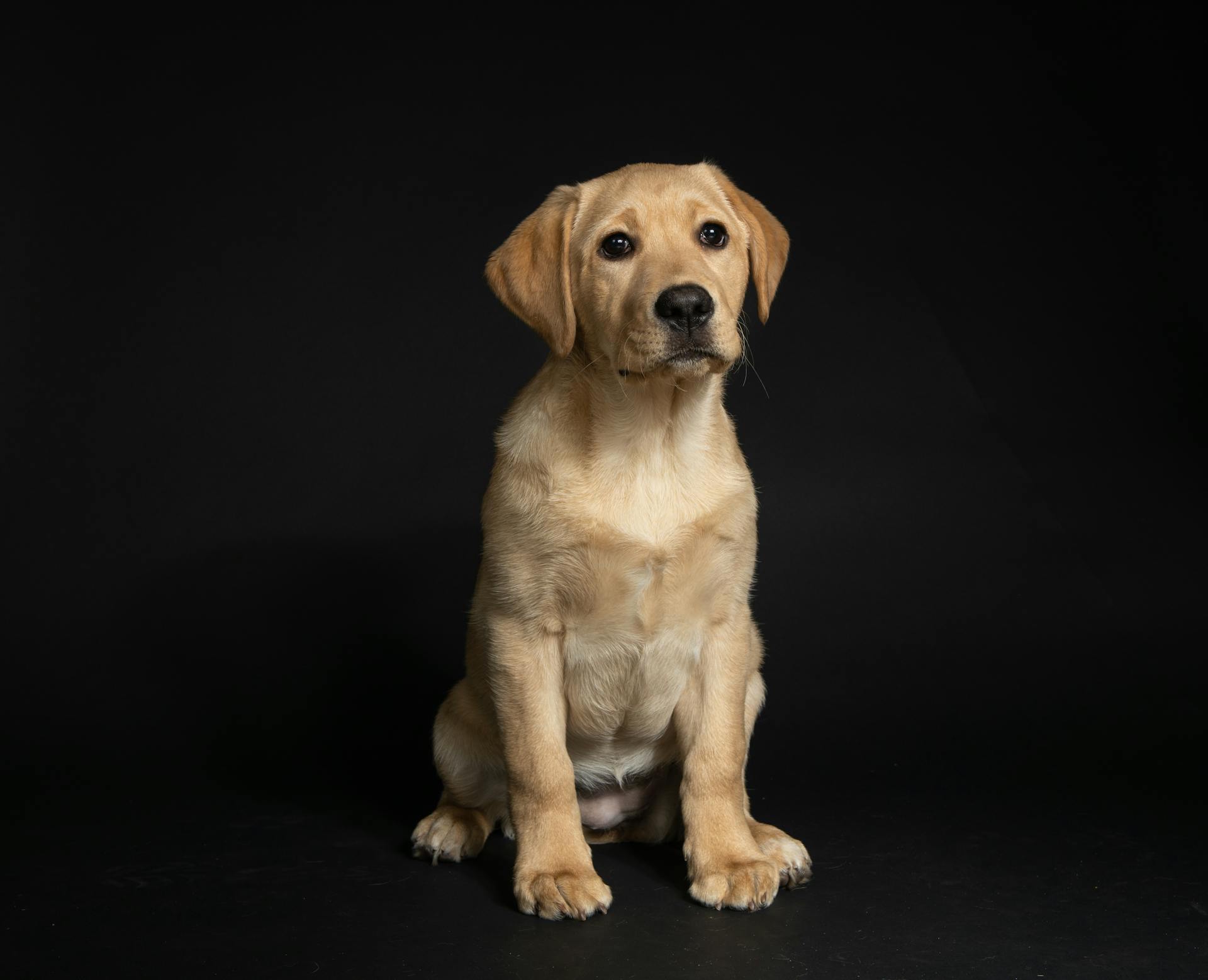
Black and brown Lab genetics can be a complex topic, but at its core, it's all about the interaction of two types of melanin: eumelanin and pheomelanin. The production of these melanins is determined by the Lab's genetics, specifically the interaction of the B and D loci.
The B locus controls the production of black pigment, while the D locus controls the production of brown pigment. This means that a Lab can be either black (B/B or B/D), brown (D/D), or a combination of both (B/D). The interaction of these two loci determines the Lab's overall coat color.
In a black Lab, the B locus is dominant, meaning that it will always be expressed over the D locus. This is why black Labs have a solid black coat, regardless of the D locus. On the other hand, a brown Lab has a dominant D locus, which produces a brown coat.
Labrador Colors
Black Labrador Retrievers, yellow labs, and brown labs are the three main colors of this breed. The most popular color is yellow, which now outnumbers black labs.
The yellow labrador retriever has become the most popular among its relatives, despite being culled when they first appeared in litters. This is because they eventually became accepted.
Black and Brown labs both have noses with the same color as their coat. However, if a Brown or Black lab has a different colored nose, they will get disqualified at dog shows.
Brown or chocolate labs are the rarest of the three, and they too were culled during the early years. They are slowly gaining in popularity.
Here are the three coat colors seen in labradors, determined by the interplay between the E and B genes:
- Black Labradors: BBEE, BBEe, BbEE, or BbEe
- Chocolate Labradors: bbEE and bbEe
- Yellow Labradors with black skin pigment: BBee or Bbee
- Yellow Labradors with pale or chocolate pigment, or an absence of skin pigment: bbee (Dudleys)
The ability of the E locus to override the coat color directed by the B locus is a classical example of epistasis, where multiple genetic loci affect the same observed trait.
Lab Genotypes and Phenotypes
Black Labradors are dominant, which means they have the most possibilities when it comes to genetic combinations. This is because they can produce both black and recessive colorations.
Yellow Labs are recessive, but their ee genes mask both black and chocolate coloration, making them more common than chocolate Labs. Chocolate Labs, on the other hand, are relatively rare and weren't recognized as an official breed until the 20th century.
Labradors can have different coat colors depending on their genetic makeup, and understanding these combinations can help you predict the color of a puppy.
Check this out: Can 2 Black Labs Have Yellow Puppies
Eumelanin Gene Interactions
The interplay between the B and E genes determines the color of a Labrador Retriever, and is a great example of epistasis.
In this interaction, the E gene affects whether eumelanin pigments are expressed in the fur or solely in the skin. A recessive mutation in the E gene truncates the protein, producing a non-functional receptor incapable of directing eumelanin deposition in the fur, resulting in a yellow coat.
Labradors with the genotype BB or Bb will express black eumelanin, while brown eumelanin will be seen in dogs with the bb genotype. This is because the B locus determines the color of the eumelanin.
A dog with the genotype bbEE or bbEe will have a chocolate coat, as it has at least one dominant E allele but must have only recessive b alleles. This is because the E gene overrides the coat color directed by the B locus.
In a single genetic cross involving two black Labradors each with a recessive allele at both the B and the E locus (BbEe), there's the potential of producing all of the possible color combinations.
Here's a summary of the possible coat colors seen in Labradors:
These genes assort independently, so a single genetic cross can produce a variety of coat colors.
Mosaics and Mis-Marks
Labradors can exhibit unusual coat patterns, known as mosaics, which result from genetic mutations or zygote fusion. These mosaics can appear as distinct black and yellow patches throughout the coat.
One documented example of a Labrador mosaic involves a male dog with random black and yellow patches. He was the result of a black female bred to a yellow male, and his genetics are consistent with the inheritance pattern of a yellow Labrador with black pigment.
Somatic mutations or zygote fusion are the most probable causes of this mosaic pattern. These genetic anomalies can occur early in development, leading to cells with different genetic capabilities.
Other "mis-marks" such as brindle, tan points, white spots, and rings around the tails are not uncommon in Labradors. These conditions have various underlying genetic and environmental causes.
The genetic and environmental factors contributing to these "mis-marks" are complex and multifaceted.
Frequently Asked Questions
What are the rarest colors of labs?
Labrador Retrievers can come in rare colors such as silver, brindle, and black and tan, which are not recognized as standard colors by reputable breeders. These unusual colors are the result of genetic variations, making them less common than the traditional black and yellow colors
Featured Images: pexels.com


